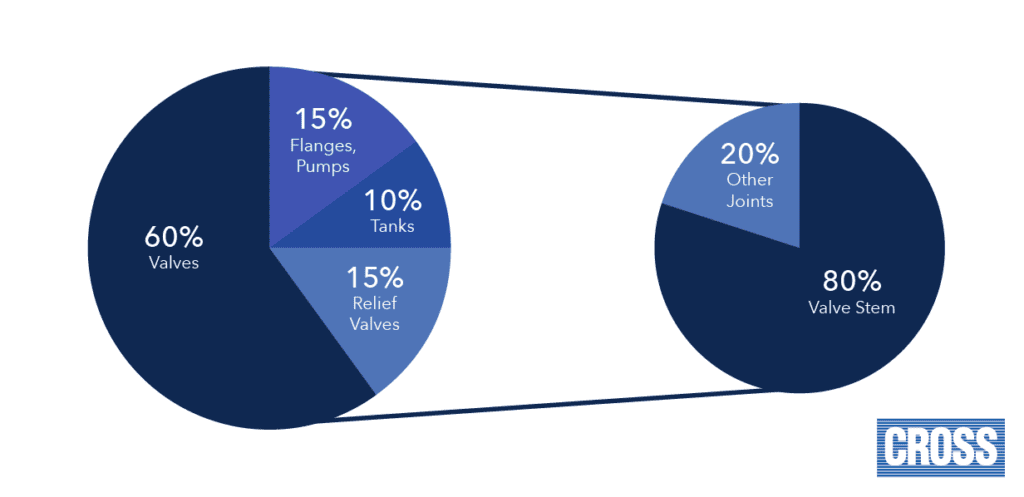The climate crisis is a critical area of concern for governments, businesses and individuals worldwide. The urgent need for action is made clear when considering rising temperatures, extreme weather events and food and water insecurity. The Paris Agreement of 2015 set warming limits to below 2°C, and ideally 1.5°C, to avoid catastrophic impacts of climate change. Since that agreement, governments have reconfirmed the importance of this, such as at the COP26 summit in Glasgow in November 2021. Here, world leaders committed to significantly reducing carbon dioxide and methane fugitive emissions. The valve industries have an essential role to play.
What Are Fugitive Emissions?
Fugitive emissions are the unintentional and undesirable emission, leakage, or discharge of gases or vapours from components inside an industrial plant such as valves, piping flanges, pumps, storage tanks and compressors. The term “fugitive” is used because these emissions are not taken into account and calculated during the design of the equipment and components. In addition, these emissions are unanticipated. As such, they are not detected by typical monitoring and control devices. Since typical control equipment and facilities cannot detect them, fugitive emissions can also be called uncontrolled or unanticipated emissions.
Methane is the primary fugitive emission from the oil, gas and chemical industries. By volume, methane sits behind carbon dioxide but it has a disproportionate impact on the environment due to its high global warming potential. It is 28 times more potent than carbon dioxide. Preventing unwanted methane emissions has therefore become increasingly important to facilities as its detrimental effects are apparent.
Fugitive Emissions from valves
Statistics show that about 60% of methane fugitive emissions come from valves, and up to 80% of these leakages are from stem-seal interfaces. Approximately 10,000 to 15,000 valves may exist in a typical refinery. This reinforces valves as a key concern, playing a vital role in preventing fugitive emissions.

Also contributing to valve failures are leaks at the bonnet, flanges and seats. As operating conditions in these and other industries continue to subject valves to ever more extreme temperatures and pressures, sealing them effectively poses a challenge that cannot be met with traditional materials and methods. Soft, compressible elastomers provide good sealing performance, but they are porous and cannot withstand temperatures in excess of 250°C (482ºF). They also become hard and brittle in cryogenic service. Metal seals have much greater temperature capabilities, high mechanical properties, lack of porosity and long shelf life.
Valve stems, which as noted are the single largest source of fugitive emissions, continue to be sealed with graphite or PTFE compression packing. However, neither of these materials is suitable for cryogenic or high-temperature service in the presence of oxygen. Spring-energised metal seals for rotary, rising stem and linear valves can provide full metal-to-metal contact, leak tightness and accommodation of axial stem movement. Also available for sealing valve stems are special ring sets that control fugitive emissions and withstand the severe conditions of service in chemical, petrochemical and nuclear facilities.
Today these more resilient, metal-to-metal seals are available and being used in valves operating under extreme conditions. Metal seals are used where other materials are unacceptable. Manufactured in a wide range of sizes, they provide infinite storage life and long-term sealing with no porosity. These properties make them the sealing solution of choice for valves operating in today’s increasingly extreme environments.
